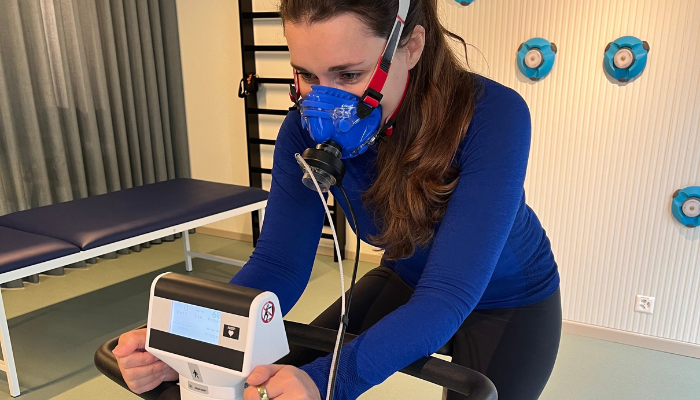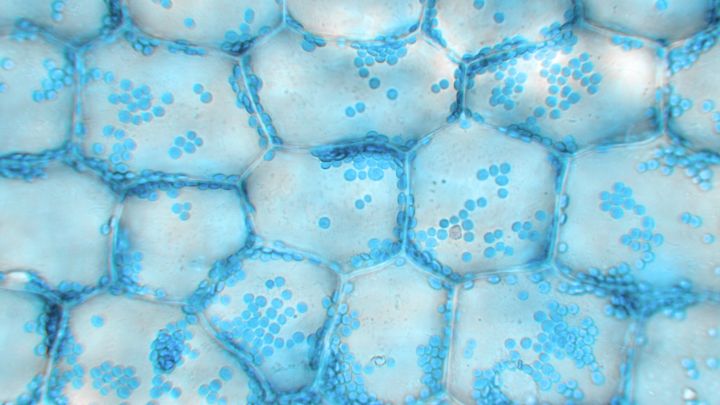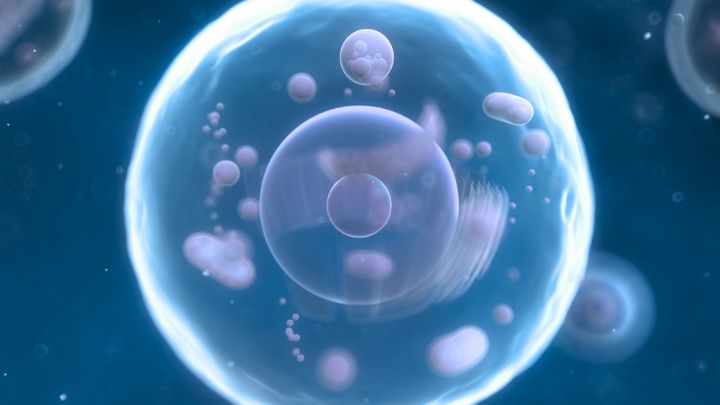Do you ever wonder about the fascinating and complex process of ageing?

What happens to your body as you grow older? Are there scientific mechanisms that can describe part of it? Why do people not seem to age at the same rates? Are you ageing healthily?
Today, let’s dive into one of the known hallmarks of ageing—epigenetic modifications. Understanding these epigenetic alterations can provide insights into managing the ageing process more effectively.
In this way, you get to take care of yourself and your loved ones, and keep on making more and more of the good memories.
In this article
Free guide to reverse your biological age

- Master the science of rejuvenation.
- Apply proven tips to turn back the clock.
- Transform your health with top longevity specialists.
What is ageing?
Ageing is an inevitable journey that every living organism undergoes. It begins with growth and peak fitness, followed by sexual maturity, and then a gradual decline in functional mobility due to a loss of molecular fidelity.
This decline is not just about getting older but involves profound physiological changes.

This process of ageing is essentially a time-dependent physiological deterioration that eventually leads to non-functionality.
It’s a complex interplay of many factors, not just the passage of time.
We often measure age by the years since birth, known as chronological age.
But there’s another important concept called biological age, which is determined by the state of our cells. This distinction is crucial because it reflects our true physiological state, and real insights of our health.
Unlike chronological age, our cells don’t celebrate birthdays. Instead, they undergo programmed death after a certain period due to factors like nutrient unavailability and DNA damage. This cellular turnover is a natural part of life, but it changes as we age.

Throughout our lives, our cells differentiate, proliferate, and mature, followed by apoptosis.
With age, these processes become imbalanced, leading to diseases such as cardiovascular disease, metabolic syndromes, and neurocognitive disorders. This is why we often say that ageing is the underlying cause of many diseases. Or simply, ageing is a disease.
In everyday language, ageing often refers to the older phase of life. In the field of gerontology, ageing describes a process marked by numerous minute changes influenced by genetic and environmental factors.
A major focus in geroscience is defining biomarkers of ageing. Scientists have identified 12 hallmarks of ageing:
- DNA instability
- telomere attrition
- epigenetic alterations
- loss of proteostasis
- deregulated nutrient-sensing
- mitochondrial dysfunction
- cellular senescence
- stem cell exhaustion
- altered intercellular communication
- disabled macroautophagy
- chronic inflammation
- dysbiosis
Various theories have been proposed to explain these biomarkers, though no single theory comprehensively covers the mechanisms of ageing.
Each hallmark simply provides a piece of the puzzle, helping us understand the complex process of ageing a bit more.
Do genes determine how you age?
Genetic predispositions play a crucial role in regulating ageing and have evolved significantly over recent decades. However, genes are just one part of the story.
Epigenetic changes, which influence gene expression without altering the DNA sequence, are something different.
And this is our main focus in this article at Avea. Epigenetic changes offer a dynamic interface between our genetics and our environment.
Epigenetic changes result from
- environmental factors
- behaviour
- lifestyle
- psychological status
All these elements collectively alter gene expression, showing how our environment and choices shape our biology.
Studies suggest that genetic factors account for about 20% to 30% of human lifespan variation, with the remaining variation attributed to environmental influences, diet, lifestyle, and other stochastic events.
Whilst the exact reasons behind successful ageing and longevity remain unclear, the role of epigenetic changes is widely acknowledged.
There are three fundamental mechanisms contributing to age-associated epigenetic alterations:
- DNA methylation
- histone protein modification
- non-coding miRNA synthesis.
Each epigenetic change can be inherited during cell division and is reversible, as these changes do not alter the gene sequence.
Epigenomes provide functional stability to chromosomes, ensuring that our genotype reflects our phenotype.
Whilst the genome serves as a pre-programmed repository for gene expression, epigenomes store memories of our lifestyle and environment, influencing gene expression interchangeably.
Numerous studies have identified epigenomes as a potent cause of diseases. Andrew P. Feinberg’s review defines “epigenetic disease” as a condition caused by faulty epigenomes, including methylated DNA and acetylated histones.
These changes accumulate throughout life and express differently, making epigenetic alterations one of the 12 hallmarks of ageing.
Since these alterations accumulate without noticeable phenotypic changes, their effects remain silent for decades until a disease manifests.
Understanding the process of ageing involves recognising the roles of genetic and epigenetic changes, and how they contribute to age-related diseases.
This can potentially help mitigate the onset of age-related diseases.
What are epigenetic modifications/alterations?
So, how do these tiny molecular changes influence our genes, shape our biology, and affect our overall health as we age?
Let’s begin with the concept of epigenetic alterations.
The term ‘epigenetics‘ literally means ‘above’ or ‘beyond’ genetics.
Despite the human body having over 200 different cell types, each cell contains the same DNA. Yet, these cells behave differently and perform unique functions. Thanks to your epigenetics.
Epigenetic alterations are orchestrated events that regulate these distinct behaviours by modifying the transcription of their respective genes.
C. H. Waddington, a British embryologist, introduced the term ‘epigenetics’ in 1942. He described it as an interaction between genes and the environment, leading to phenotypic changes—similar to the metamorphosis seen in biological development.
Over the past decades, the term has been used in various contexts, but its underlying mechanism remains consistent. These changes in gene expression mainly occur through modifications at the chromatin level, including changes in the core histone octamer proteins.
There are three primary mechanisms of epigenetic alterations. Let’s explore each of these in more detail.
1. DNA methylation
This process occurs primarily at certain specific locations (CpG sites) of DNA, where a methyl group is added to the cytosine base. This modification is catalysed by enzymes called DNA methyltransferases.
DNA methylation restricts gene transcription by interfering with the transcriptional machinery, thereby altering gene expression and leading to phenotypic changes.
Long story short– DNA methylation changes the way your DNA is expressed.
Ageing significantly affects DNA methylation, which can indicate somebody’s health status.
Hypomethylation is common at CpG regions with ageing, whilst hypermethylation is seen at CpG islands in ageing and cancer.
In 2013, researchers Horvath and Hannum proposed the concept of an epigenetic clock to predict ageing based on DNA methylation status.
Horvath’s clock integrates data from multiple tissues, whilst Hannum’s clock uses peripheral blood samples.
Studies have shown a high correlation between predicted age and chronological age, making DNA methylation a reliable predictor of biological age and age-related diseases.
2. Histone modification
The eukaryotic genome is organised into chromatin, where DNA wraps around histone octamers to form nucleosomes.
CHROMATIN IMAGE.

These nucleosomes undergo modifications that can either activate or repress gene expression.
There are many types of modifications that accumulate over time. These can alter gene expression, contributing to early ageing and age-related health issues.
3. Non-coding RNA production

MicroRNAs, or miRNAs, are endogenous non-coding RNAs that silence gene expression through post-transcriptional modifications.
miRNAs are small molecules that regulate gene expression by binding to mRNA, preventing it from making proteins. They influence various biological processes, including ageing, by targeting specific pathways. Their discovery in C. elegans has led to understanding their roles in growth, development, and age-related diseases in humans.
How do epigenetics affect ageing?
Let’s have a recap.
The epigenome consists of a collection of chemical changes that can pass instructions to the genome through transgenerational epigenetic inheritance.
This includes various chemical compounds and proteins that can turn genes “on” or “off” by attaching to DNA molecules. Once attached, these marked genomes can be inherited through cell generations.
But although these changes are heritable, factors such as lifestyle, diet, environment, behaviour, and psychological status can also significantly induce epigenomic changes.
For instance, habits like excessive smoking, unhealthy lifestyles, imbalanced diets, stress, psychological depression, societal changes, and weather variations can all accentuate epigenomic changes.
These factors can lead to early DNA damage, which corresponds to cellular senescence and the onset of early ageing and associated diseases.
In recent years, researchers have focused on the role of micronutrients in influencing epigenomes.
Micronutrients such as zinc, magnesium, vitamin C, vitamin D3, and B vitamins like thiamine and pyridoxine play critical roles in regulating metabolism, neurotransmitter generation, bone density, and plasma membrane potential.
The Essentials
Latest science findings reveal the crucial role of supplements in promoting longevity. Nutrients can directly impact healthy-ageing pathways at the cellular level.
Though we support a diet-first approach, supplements offer science-based doses to offset deficiencies or even replenish levels of crucial molecules, delaying the signs of ageing.

Avea is the future of longevity, grounded in rigorous science from concept to creation.
The Essentials are packed with vegan, essential micronutrients: Vitamin D3, Vitamin K2, Zinc, Magnesium and Omega-3. Support your immune system, brain and heart health, to build your foundation.
All the ingredients of the Essentials work perfectly together to support overall health. Vitamin D requires cofactors such as Vitamin K2, Zinc, Magnesium and Omega-3 for proper function. Vitamin K2 helps to direct calcium to bones and teeth, while Zinc supports immune function and Vitamin D receptor activation. Magnesium and Omega-3 are essential to convert D3 into its active form.
Build a strong foundation
- Address common nutrient deficiencies.
- Support immune and overall health.
- Enhance your energy and vitality.
A 2021 pilot randomised controlled trial involving 43 healthy males aged 50–72 demonstrated that dietary and lifestyle interventions could reverse epigenomic changes. This suggests that the negative effects of faulty epigenomes can potentially be mitigated, returning the body to a healthier state.
Can we stop ageing?
Whilst ageing itself cannot be stopped, identifying ageing markers can help slow down the process and reduce associated health risks through therapeutic and nutritional interventions.

Ageing is the primary cause of virtually all chronic diseases and disabilities.
Early detection of ageing biomarkers can serve as a preventive measure for clinicians. Whilst tissue-specific biomarkers require live human subjects, blood-based biomarkers can be easily detected from peripheral blood samples.
The advent of RT-PCR technology has facilitated the identification of blood-based epigenetic markers, which can indicate early ageing and age-related diseases if detected early.
For instance, DNA hypermethylation is a valid indicator for certain types of tumourigenesis. Studies on ischemic heart disease have linked DNA hypomethylation to atherosclerosis, and global hypomethylation has been associated with breast cancer and histone methylation.
A 2019 longitudinal study involving 11,461 participants concluded that blood-derived DNA methylation is associated with the risk of coronary heart disease across diverse populations, making methylation status a valuable informative tool.
The accuracy of predicting early ageing and age-related diseases using blood-based epigenetic biomarkers is improving with the development of “next-generation clocks” like DNAmGrimAge, which surpass the accuracy of “first-generation clocks.”
Intervention studies have shown that diet and physical activity can slow down DNA methylation status.
Have you watched the new Netflix documentary You Are What You Eat: A Twin Experiment?
The aim of the study was to investigate the impact of two different diets on cardiovascular health, metabolic status, and the gut microbiome. Their biological ages were also determined.
Check out our summary here.
Keynote from Avea
The acquisition of knowledge regarding epigenetic changes is boundless. As our environments and experiences—our nature and nurture—differ, so too does the outcome of every epigenetic change.
Detecting epigenetic markers is not only crucial for identifying the ageing process, but also for pinpointing the onset of age-related diseases.
Our genomes are constantly receiving unique sets of epigenomic instructions due to our diverse environmental experiences.
These instructions are entirely independent and unique to each individual, showing the importance of personalised approaches to health.
Current epigenetic studies are becoming pivotal in biomedical research, especially regarding pharmaceutical drug discoveries and the development of new therapies.
The reversible nature of epigenetic changes holds great promise for future innovations in the biomedical field. By incorporating computational biology, bioinformatics, and next-generation sequencing, we can enrich age-related epigenetic studies.
The universe is vast, and its mysteries are unbounded. Therefore, understanding the reasons behind successful ageing with minimal disease has always been a significant target.
















